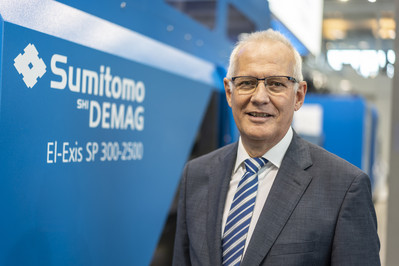Mr. Liebig, your company is part of the Japanese Sumitomo Group. Japan has had a legal foundation in place for a circular economy since 2000. What level are they currently at in Japan?
The fundamental difference between Japan and Germany is that Japan is an island; therefore, everything is regulated autonomously: incentives, waste separation, and recycling. Japan can also count on a high level of consumer discipline. For Japan, the sea and fishing are very important, and the population is correspondingly sensitive to the issue of marine pollution. For this reason, support for the circular economy is higher than in many European countries. In Europe, people focus on bans, but they don't consider that the carbon footprint is actually increased by not using plastic in many areas. For example, highly coated paper as a composite material is not separable; it would not be a viable alternative. The same applies to glass, which consumes more energy than plastic, both in production and transportation over long distances.
And to what extent is there an exchange between Sumitomo (SHI) Demag and the parent company on sustainability at a corporate level?
Climate neutrality plays a key role within the Sumitomo Group, and the CEOs of all associated companies must strive for sustainability and climate neutrality. The most important way to achieve this is our focus on fully electric machines, which leads to significant savings in CO2 emissions. Ten years ago, 20 percent of our machines were fully electric; today it is more than 80 percent.
Is there any further to go?
Yes; because the issues of sustainability and climate neutrality have now also reached the consumer sector; that's why I expect to see increased demand for all-electric machines in that area. Five years ago, we converted one of our two sites in Germany to fully electric machines. Even though it was very difficult to push this change through at the time – after all, we first dispensed with an order volume of 20 percent – our decision has turned out to be very far-sighted. Our expectation that the markets would shift towards sustainability and energy savings has proved to be true. As a result of our early decision, we now have a tremendous competitive advantage.
Has the Covid pandemic made the public more aware of the benefits of plastic?
No, at least not yet in Europe. In China, for example, the focus is on hygiene when using plastics. Nevertheless, there are also positive signals in Europe, such as the decision by McDonalds to replace the previously common packaging made of disposable cardboard with long-lasting plastic packaging integrated into a deposit system in some pilot restaurants. If consumers change their behaviour and are also prepared to spend more money, then this can lead to a major success in the reuse of plastic – both in the deposit system and in recycling.
What are the options for reducing material input?
Polymer prices have risen sharply over the past year. Manufactured plastic parts are becoming increasingly expensive, as the material has a major impact on the price. Our ambition is to reduce the use of material by improving the process and enabling our customers to produce ever thinner-walled parts with our solutions. Various approaches to material or process technologies are conceivable here. One example would be foaming, which reduces the amount of material required.
What is the situation for compostable and recyclable materials?
Basically, processors need financial incentives to switch to such materials. The difficult part is to achieve a piece quality for recycled but also for compostable pieces that are comparable to virgin material. Recyclate processing in itself is not an insurmountable technological challenge. Ultimately, we process many materials, and recyclates have now broadened the material range. The challenge here is to control non-uniform material properties through intelligent process monitoring. Great hope is being offered by Material manufacturers are working hard on stabilising and improving material properties, which is very promising. The limitation regarding the use of recyclates depends on the purity.
What further contribution can your company make regarding machinery to increase sustainability?
To focus fully on all-electric. In Europe, almost every second machine is now fully electric. All-electric machines are the future and, following their success in medicine and electronics, the share of all-electric machines is increasing in packaging and now also in the automotive sector. All-electric injection moulding machines require less energy, less water, less oil lubrication, less utilisation of materials, which basically means much fewer resources. Let's take a 350-ton all-electric machine as an example: compared with a hydraulic machine in the same clamp force class, an all-electric machine produces 40 to 80 percent less CO2 per year.
Video statement Gerd Liebig: https://vimeo.com/655340619

